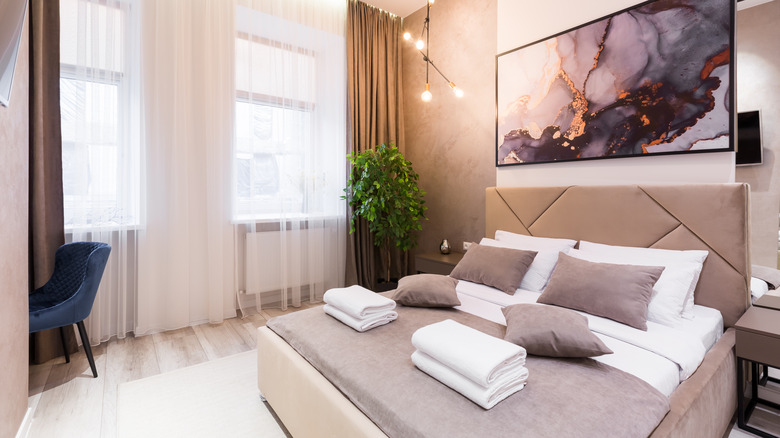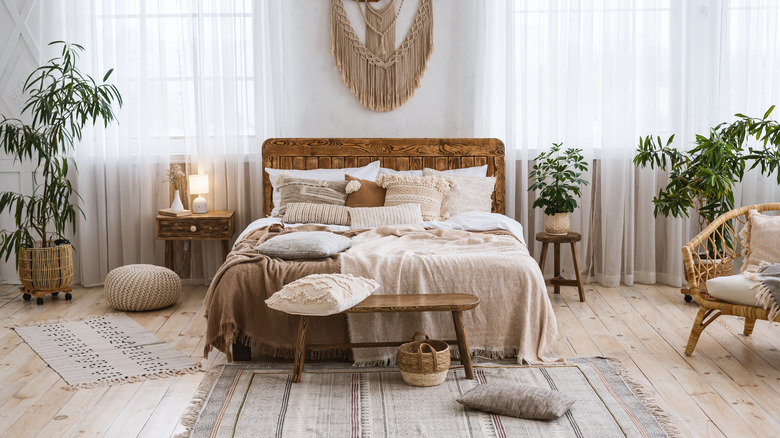HGTV's Jenny Marrs Dispenses Her Best Advice For Creating The Perfect Bedroom Layout
A good night's sleep is as much about the environment you create as it is about getting to bed on time. Your bedroom should be relaxing enough to help you get to sleep but also help you sustain sleep throughout the night. When designing a bedroom, aesthetics and function should both be top priorities. Opting for soft and relaxing colors, comfortable fabrics, and an overall serene atmosphere will go a long way in creating a space where you can sleep soundly. But you'll also want your bedroom to function for your lifestyle and needs; that's where making smart decisions about the furniture you choose comes in.
"One of the biggest design mistakes I see people make in their bedrooms is not choosing furniture or design pieces that are functional and have multiple purposes," Jenny Marrs explains to Home and Gardens. "I like to find pieces that can hold and store various items that you want nearby but want to keep out of sight."
On HGTV's "Fixer to Fabulous," Marrs always strives to create a home for her clients that fits their styles and personalities and addresses functionality. Of course, you start and end your day in the bedroom, so it's essential that the space sports a layout that caters to your needs.
Prioritize bed placement
The centerpiece of any bedroom is the bed, so it should come as no surprise that this is the most crucial piece of furniture when configuring your bedroom layout. "Repositioning your bed to optimize space and in a setting away from distracting light and noise can be a quick and effective way to instantly help you sleep better," Marrs says (via Home and Gardens). "Many people don't realize the impact the positioning of your bed in the room has on your ability to wind down, fall asleep, and stay asleep."
It's also vital to consider where your bed faces, especially regarding windows and doors. You don't want to block entryways or create passageways requiring you to turn to the side. This can make your bedroom feel small even if you have room to spare. And when it comes to windows, consider how the sun shines into the room. Avoid placing your bed in a space where the sun's rays might wake you up prematurely. It may also be best to consider the loud areas of your home, like busy bathrooms or kids' rooms, and keep your bed away from walls that border these spaces.
Make bedside tables functional
Beyond where you place your bed, you also want to ensure the space around it functions for your needs. Bedside tables are a prime location for all your devices and sleep necessities. "I love my bedside table because I can keep my journal, Natrol melatonin gummies, chargers, and whatever else I need close to me during the night while also keeping my space free of clutter," Marrs says (via Home and Gardens). Look for bedside tables with shelves or drawers for storage so you can keep your tabletop free for the necessities that should be within arm's reach.
And while technology has become a significant part of our lives, its place in the bedroom should be kept to a minimum. "TV, tablets, phones, and other connected devices from around your bed have the potential to be noisy and distracting," Marrs says. Light, especially blue light, can suppress melatonin output, making it difficult to fall and stay asleep. Instead, consider a docking station on your bedside table where you can place your electronic devices before dozing off.


